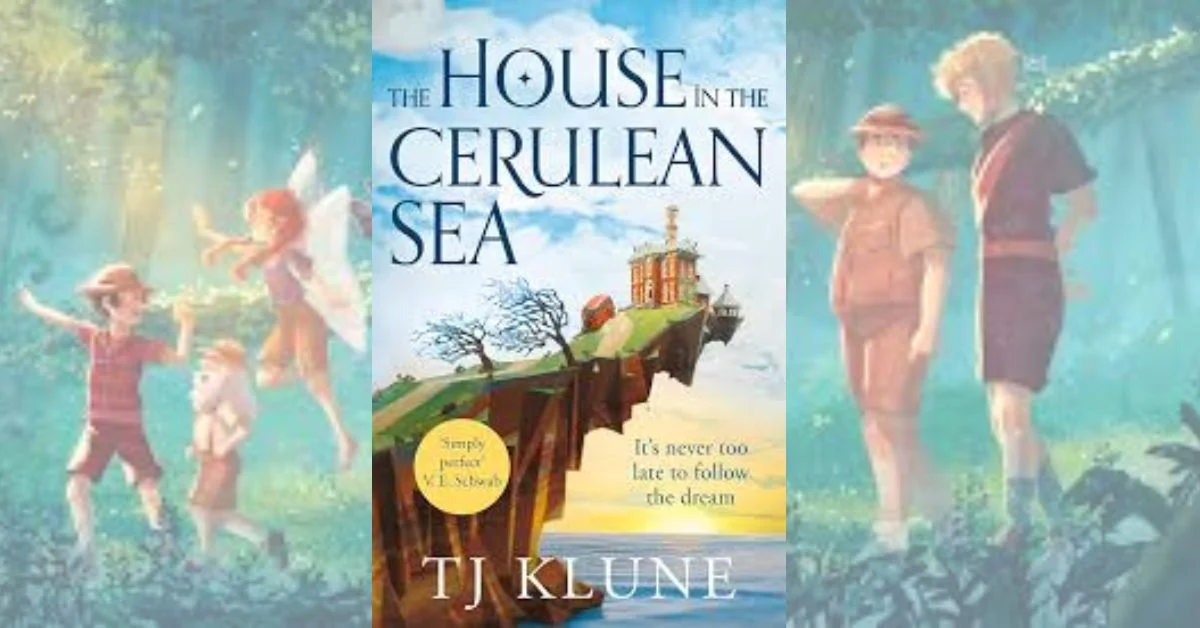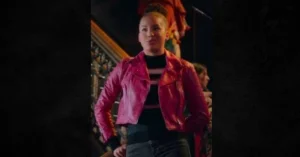“The House in the Cerulean Sea” by TJ Klune is the perfect book for anybody looking for a mix of light-hearted fantasy, profound emotional impact, and philosophically stimulating ideas. The story’s uplifting message, diverse cast of characters, and LGBTQ+ representation have made this bestseller a hit with readers all around the globe.
We will go into the storyline, characters, and the enduring messages that make this book a literary masterpiece in this post. Whether you’re a seasoned reader or just getting into the series, get ready for a deep dive into a renowned fantasy novel from the past few years.
Overview of The House in the Cerulean Sea
Originally released in 2020, “The House in the Cerulean Sea” is a work of modern fantasy literature. The protagonist, Linus Baker, is an orderly and methodical caseworker for the DICOMY who is assigned the mission of examining an orphanage that houses some of the most peculiar magical children that history has ever recorded.
The plot gently develops into a touching saga of self-discovery, acceptance, and the value of family against the background of a serene ocean and verdant island.
About the Author: TJ Klune
TJ Klune is an American author known for his inclusive storytelling and compelling queer characters. An openly gay writer, Klune has been praised for his role in expanding LGBTQ+ representation in genre fiction.
Notable Works:
- The Extraordinaries (YA superhero series)
- Under the Whispering Door
- Wolfsong (Green Creek series)
Klune describes The House in the Cerulean Sea as a “love letter to queer identity, chosen family, and fighting back against systemic discrimination.”
Plot Summary (Spoiler-Free)
A life of regularity and peace is what Linus Baker leads. Orphanages that house magical children are subject to his scrutiny in his role as a caseworker. When he is ordered to investigate the enigmatic Marsyas Island Orphanage, administered by Arthur Parnassus, his life takes a dramatic turn. The Antichrist, along with gnomes, wyverns, sprites, blob-like beings, were-Pomeranian, and other children, are kept there. What begins as a work for Linus becomes a transformative adventure that forces him to face his own prejudices, anxieties, and aspirations.
As the story progresses, it becomes clear that magic isn’t necessarily derived from supernatural abilities, but rather, it is frequently the result of genuine human connection.
Main Characters and Magical Children
Linus Baker
- Rule-following, middle-aged caseworker
- Surprisingly lovable and relatable
Arthur Parnassus
- The caretaker of the orphanage
- Mysterious and philosophical
The Children:
- Lucy (short for Lucifer) – The Antichrist with a heart of gold
- Talia – A bearded gnome with a green thumb and a sharp tongue
- Chauncey – A green blob aspiring to be a bellhop
- Sal – A shy, abused boy who turns into a Pomeranian
- Phee – A powerful forest sprite
- Theodore – A wyvern who collects buttons
These characters are more than magical—they’re metaphors for misunderstood identities.
Major Themes in The House in the Cerulean Sea
1. Found Family
The novel emphasizes the importance of chosen families over biological ones.
2. Empathy and Understanding
Through Linus’s transformation, we learn how empathy can dissolve prejudice.
3. LGBTQ+ Identity
Arthur and Linus’s subtle romance adds heartfelt queer representation.
4. Government Control vs. Personal Freedom
DICOMY represents bureaucratic overreach, while the island symbolizes freedom.
5. Self-Discovery
Every character, especially Linus, embarks on a journey to find themselves.
Why This Book Resonates With So Many Readers
- Uplifting tone in a world overwhelmed with cynicism
- Rich, inclusive characters that break stereotypes
- Comfort read quality perfect for fans of magical escapism
- Modern fairytale vibes that evoke hope and healing
Readers often say The House in the Cerulean Sea feels like a warm hug in book form.
Representation and Inclusivity in the Story
This book is a shining example of how to write inclusively without being preachy. TJ Klune skillfully normalizes queerness, disability, trauma, and neurodivergence in ways that are accessible and affirming.
Inclusive Aspects:
- Gay romance
- Multicultural children
- Mental health discussions
It’s not about being different; it’s about embracing those differences.
Literary Style and Narrative Structure
Klune’s writing style is clear, humorous, and character-driven. The story flows like a gentle tide, allowing readers to become immersed in the setting and people.
Style Highlights:
- Third-person limited perspective (Linus’s POV)
- Witty internal monologues
- Vivid environmental descriptions
The balance between humor and tenderness gives the story its emotional punch.
Comparisons to Other Fantasy Works
If you loved these titles, you’ll likely adore The House in the Cerulean Sea:
- Good Omens by Terry Pratchett and Neil Gaiman
- The Ocean at the End of the Lane by Neil Gaiman
- The Midnight Library by Matt Haig
- Legends & Lattes by Travis Baldree
Each explores magical realism with heartfelt themes and eccentric characters.
Reader Reviews and Critical Acclaim
Goodreads Rating: ★★★★★ 4.45/5 (600K+ ratings)
Critics Say:
- “Enchanting and deeply moving” – BookPage
- “A masterclass in empathy and storytelling” – Library Journal
- “Harry Potter for grown-ups who still believe in magic” – NPR
Fans frequently cite this novel as their favorite book of the decade.
Adaptation Possibilities
Given its popularity, many wonder if we’ll see a film or series adaptation.
Potential Platforms:
- Netflix or Amazon Studios
- Animated vs. Live-Action debates among fans
While no official adaptation is confirmed, rights have reportedly been optioned.
How The House in the Cerulean Sea Promotes Empathy
Empathy is the cornerstone of this book. By introducing children society fears, Klune asks: “Who are we to judge?”
Real-World Impact:
- Teachers using it in classroom discussions on empathy
- Therapists recommending it for clients recovering from trauma
- Readers changing their views on identity and inclusivity
It’s more than a book—it’s a movement of understanding.
Conclusion
The House in the Cerulean Sea by TJ Klune is more than just a bestselling novel—it’s a literary beacon of compassion, representation, and magic. With unforgettable characters and a powerful message about acceptance, it’s a book that leaves a lasting imprint on the heart.
Whether you’re a fan of fantasy, LGBTQ+ fiction, or just great storytelling, this novel is a must-read. Let it guide you through a world that feels both far away and closer than ever.
Frequently Asked Questions (FAQs)
1. Is The House in the Cerulean Sea suitable for young readers?
While it’s written for adults, older teens (14+) can enjoy it due to its gentle tone and affirming messages.
2. Is there a sequel to The House in the Cerulean Sea?
As of now, there’s no official sequel. TJ Klune has written related books, but this is a standalone story.
3. What genre is The House in the Cerulean Sea?
It’s contemporary fantasy with magical realism, queer fiction, and literary fiction elements.
4. Where can I buy The House in the Cerulean Sea?
Available at most bookstores, including Amazon, Barnes & Noble, and independent sellers.
5. Does the book address serious themes?
Yes—though whimsical, it tackles prejudice, government control, mental health, and identity with grace.
For more information, click here.









